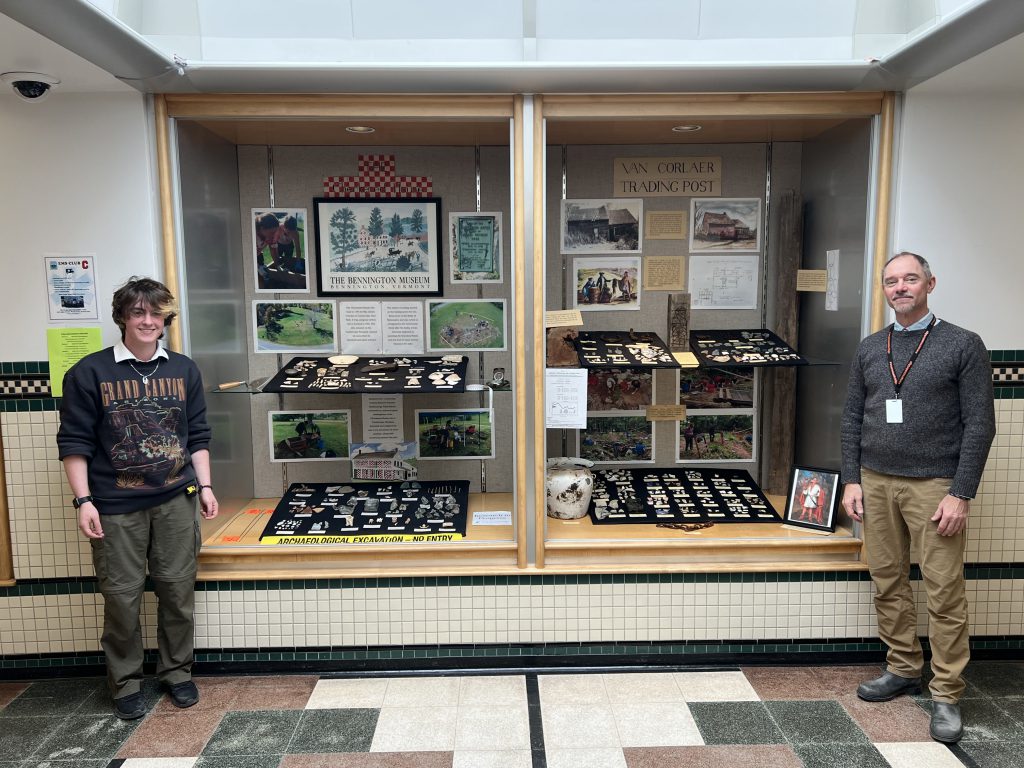To commemorate the 10th anniversary of the archaeology field schools at CCS, senior Rahe Lulla and science teacher Steve Butz worked together to create and update two display cases to showcase the work completed in the field schools.
The Checkered House, a tavern on Turnpike Road that burned in 1907, was the site of a student excavation project. The house was built in 1765 and was a subject that was painted by local artist Grandma Moses. One of Moses’ paintings of the house is in the CCS display. Rahe Lulla created an original art piece of the Checkered House to be included in the display with Moses’ painting.
The most recent field school was the Van Corlaer Trading Post in White Creek. The Trading Post is believed to have been built by Arendt Van Corlaer, a Dutch fur trader, between 1709 and 1711 for a local Native American Sachem known as Sacquans, “The Owl King”. The Van Corlaer site is unique in that it contained an inscription related to Sacquans which was carved into one of the beams.
To prepare the two display cases, Rahe first took every artifact and hand cleaned and dusted them. Then, he took pictures and created individual labels for each of the artifacts before placing them in the display cases. Rahe is doing an independent study in archaeology this year.
“Rahe is not only learning about archaeological methods, but also applying art skills for the displays,” said Steve Butz. “The project shows the marriage of art and science, which is great. The displays show a good amount of history of the school district dating back to 2000 BC.”
The district has run a number of field schools at different sites in the area and Butz hopes to run a school this summer. The CCS archaeology field schools teach students about surveying and mapping, excavation techniques, and artifact conservation. It is also an opportunity for students to learn about local history.
“One of the reasons we undertook this project is because the artifacts from the first field school, Shay’s Settlement, are being donated to the state of Vermont,” said Butz. “Shay’s Settlement was the field school site for seven years. We removed those artifacts from our display cases to accommodate these two new displays.”
While working on this project, Lulla learned methods to remove iron from artifacts and how to preserve iron artifacts in their original state.
“The project has been a lot of fun,” said Rahe. “I grew up watching the Indiana Jones movie series and it made me want to be an archaeologist.” Rahe and Mr. Butz will be presenting information about this project to the Board of Education on Feb. 8.
“It feels great to be done,” said Rahe. “I was part of the dig at Van Corlaer a couple years ago. Seeing the process through from the dig to creating the displays was rewarding. This is my last year at CCS and I wanted to do something that would last a lot longer than a year.”
